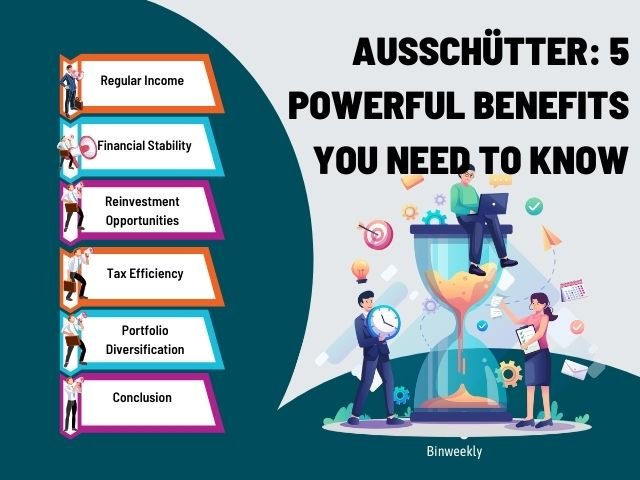“Ausschütter” is crucial in finance, especially for investors looking for regular investment income. Understanding the benefits of Ausschütter can help you make informed decisions about your financial strategy.
What is an Ausschütter?
An “Ausschütter” is a distributing entity commonly used in investment funds or companies that pay out profits to shareholders. These distributions can take the form of dividends, interest, or other types of income.
Benefit 1: Regular Income
One of the main advantages of investing in an Ausschütter fund is the regular income it provides. Investors receive periodic payments, which can be especially beneficial for those who rely on their investments for day-to-day expenses, such as retirees.
Benefit 2: Financial Stability
Receiving regular payouts from an Ausschütter can contribute to financial stability. This consistent income stream helps investors better manage their finances, plan for future expenses, and avoid the uncertainties associated with non-distributing funds.
Benefit 3: Reinvestment Opportunities
While Ausschütter funds distribute income, investors can reinvest these payments. This can be done in the same fund or different investment opportunities, allowing for flexibility and potentially compounding returns over time.
Benefit 4: Tax Efficiency
Depending on your country’s tax regulations, regular distributions from an Ausschütter can offer tax advantages. Some jurisdictions may have favorable tax treatments for dividend income compared to capital gains, making Ausschütter an attractive option for tax-conscious investors.
Benefit 5: Portfolio Diversification
Ausschütter funds often invest in a diverse range of assets to generate income. This diversification can reduce risk and provide a more stable return profile, as revenue is generated from multiple sources rather than relying on the performance of a single asset.
Conclusion
Understanding the role and benefits of an Ausschütter is essential for any investor looking to enhance their portfolio with regular income. By providing regular payouts, financial stability, reinvestment opportunities, tax efficiency, and portfolio diversification, Ausschütter funds can be a valuable component of a well-rounded investment strategy. Whether you’re a retiree seeking steady income or an investor looking to diversify your portfolio, Ausschütter offers compelling advantages.
FAQs:
What are distributing funds?
Distributing funds are investment funds that regularly pay out income, such as dividends or interest, to their investors. These payouts can provide a steady income stream for those who invest in them.
How often do distributing funds pay out income?
The payout frequency of distributing funds can vary. Some funds distribute income monthly, quarterly, semi-annually, or annually. It’s essential to check the specific fund’s policy to understand the payout schedule.
Who should consider investing in distributing funds?
Distributing funds are ideal for investors seeking regular income, such as retirees or those who need a steady cash flow. They can also attract investors looking for tax advantages or diversification in their portfolios.
Are there tax benefits to investing in these funds?
Yes, depending on your country’s tax regulations, the income from distributing funds may have favorable tax treatment compared to capital gains. It’s advisable to consult with a tax professional to understand the specific tax implications.
Can I reinvest the income from distributing funds?
Yes, many investors reinvest the income they receive from distributing funds. This can be done within the same fund or into different investment opportunities, potentially leading to compounded returns over time.
How does distributing funds contribute to portfolio diversification?
Distributing funds typically invest in a variety of assets to generate income. This diversification can reduce risk and provide a more stable return profile, as revenue is generated from multiple sources rather than relying on a single asset’s performance.
What are the risks associated with distributing funds?
Like all investments, distributing funds comes with risks. These can include market risk, interest rate risk, and the potential for lower income during economic downturns. It’s essential to research and understand these risks before investing thoroughly.
How do I choose the right distributing fund?
Choosing the right distributing fund involves considering factors such as income needs, risk tolerance, investment goals, and the fund’s payout frequency and performance history. Consulting with a financial advisor can also help you make an informed decision.
Are there any fees associated with distributing funds?
Yes, distributing funds often comes with management fees and other expenses. Reviewing Review the fund’s prospectus to understand all associated costs and how they might impact your overall returns is crucial.

